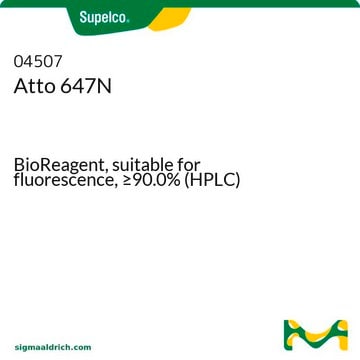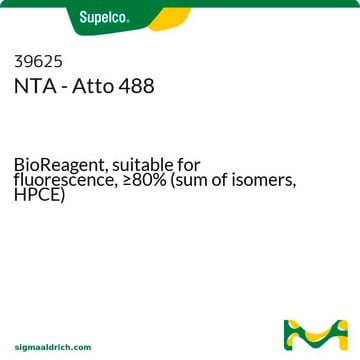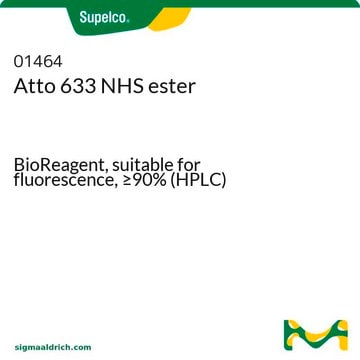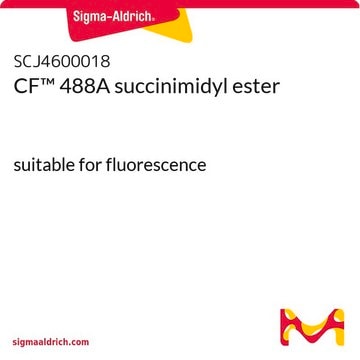41698
Atto 488 NHS ester
BioReagent, suitable for fluorescence, ≥90% (HPLC)
Sinónimos:
Atto 488
About This Item
Productos recomendados
Línea del producto
BioReagent
Nivel de calidad
Análisis
≥90% (HPLC)
≥90% (degree of coupling)
fabricante / nombre comercial
ATTO-TEC GmbH
λ
in methanol: water (1:1) (with 0.1% perchloric acid)
Absorción UV
λ: 501-507 nm Amax
idoneidad
suitable for fluorescence
temp. de almacenamiento
−20°C
Categorías relacionadas
Descripción general
Aplicación
Características y beneficios
- Strong Absorption.
- High Fluorescence quantum yield.
- High Photostability.
- Excellent water solubility.
Información legal
Producto relacionado
Código de clase de almacenamiento
11 - Combustible Solids
Clase de riesgo para el agua (WGK)
WGK 3
Equipo de protección personal
Eyeshields, Gloves, type N95 (US)
Certificados de análisis (COA)
Busque Certificados de análisis (COA) introduciendo el número de lote del producto. Los números de lote se encuentran en la etiqueta del producto después de las palabras «Lot» o «Batch»
¿Ya tiene este producto?
Encuentre la documentación para los productos que ha comprado recientemente en la Biblioteca de documentos.
Los clientes también vieron
Artículos
Chromogenic and fluorogenic derivatives are invaluable tools for biochemistry, having numerous applications in enzymology, protein chemistry, immunology and histochemistry.
Nuestro equipo de científicos tiene experiencia en todas las áreas de investigación: Ciencias de la vida, Ciencia de los materiales, Síntesis química, Cromatografía, Analítica y muchas otras.
Póngase en contacto con el Servicio técnico







